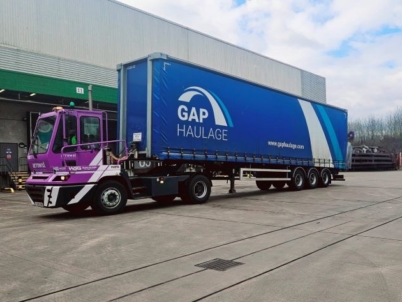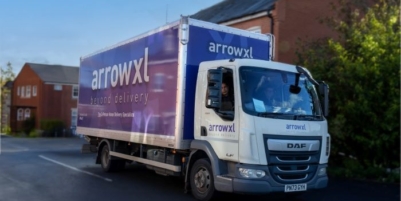-
Nutrivend selects Forterro’s Orderwise to support online expansion and streamline operations - April 11, 2025
-
ARROWXL LAUNCHES AMBITIOUS ZERO WASTE ROADMAP - April 8, 2025
-
THE BCMPA’S NEW CAMPAIGN DRIVES OUTSOURCING SUCCESS IN Q1 - April 7, 2025
-
BLACKOUT TECHNOLOGIES TARGETS TELEMATICS-INTEGRATED MOBILE DEVICE BLOCKING TO COMBAT SMARTPHONE DISTRACTION - April 1, 2025
-
Sparck Technologies awarded Royal designation - March 27, 2025
-
OpenADR Alliance announces first OpenADR 3.0 certified products with EVoke Systems, E.ON Energy and Universal Devices - March 25, 2025
-
Growing fulfilment and contract packer appoints new Managing Director - March 25, 2025
-
When is it time to invest in a WMS? Understanding the key trigger points - March 25, 2025
-
eCapital helps Vantage Recruitment on its journey to financial success - March 24, 2025
-
Hugo Beck Celebrates 70 Years of Packaging Innovation with Open House Events - March 20, 2025
Tim Robinson Doddle CEO
Sustainability is certainly the critical buzz word for the logistics industry in 2022, especially in last-mile deliveries. Our research revealed that 64% of consumers are concerned about the impact of delivery on carbon emissions. The last mile is the most visible part of the ecommerce journey for consumers, and it is the part they have the most control over through their choice of delivery option.
The demand for online shopping is here to stay, with recent research from YouGov finding that 45% of people prefer to buy things online, and more than two thirds saying that online shopping makes their life easier. As delivery and returns experts, we’ve been investigating how sustainability shapes shopping behaviour, and how it is changing the world of delivery in ways consumers don’t see. We’ve looked at what effects current initiatives are having on buying patterns, as well as what needs to happen for the big promise of truly sustainable online deliveries to be met.
The first issue is that there’s still an information asymmetry, as economists would term it. Consumers often aren’t sure which choices are more sustainable, and they’re not being helped by the scarcity of information at checkouts. Better information for consumers should allow them to express their preferences for sustainable delivery, though exactly how this will manifest is yet to be seen. What seems obvious is that if retailers start to offer proven sustainable delivery options, their checkout conversion should increase.
On the logistics side, carriers and posts have been making a lot of noise about their goals to become carbon neutral. However, parcel volumes are at record highs, and the reductions we’ve seen in emissions-per-parcel have been massively outpaced by that growth in volume. Worldwide ecommerce sales grew from $4.2 billion in 2020 to just under $5 billion in 2021. In sum, we’re delivering more parcels, driving more miles, and emitting more than ever.
A study by the World Economic Forum expects demand for last-mile delivery to grow by 78% globally by 2030. According to that study, without intervention, this will increase the number of delivery vehicles in the top 100 global cities by one-third. Without change, achieving sustainability in the face of increasing parcel volumes is not possible.
The long-term solution for last-mile sustainability is to reach zero-emission deliveries. We’re a while away from this, so the short and medium-term solutions are to reduce emissions per mile and reduce the number of miles driven.
To address the first point, carriers need to invest in electric vehicles, or in low or zero-emission delivery methods such as on-foot deliveries or cycle delivery services. This would be easier to implement in urban areas but may not be possible for rural locations or bulky items.
To reduce the number of miles driven, carriers need to increase drop density, improve consolidation, and reduce failed deliveries, which are increasing as consumer behaviours change following the pandemic. Instead of being at home and available to accept deliveries, consumers are returning to work and social engagements. As our post-Covid report discovered, 58% of consumers are back to normal or busier than before the pandemic.
Although electric vehicles will be an essential part of long-term sustainability, carriers must reduce the number of miles driven per parcel in the short and medium term, through consolidating deliveries in out-of-home (OOH) networks. This should reduce carbon emissions, provided the OOH network is not primarily accessed by dedicated motor vehicle trips.
Our research shows that 74% of shoppers plan to use OOH delivery in the future, partly because it offers convenience benefits for consumers who are no longer at home to accept deliveries. Consumers are becoming increasingly environmentally conscious in their delivery options, and 43% of them would be willing to pay more to select them, but crucially only 3% think they have the right information on sustainable deliveries.
Ultimately it falls on carriers to provide OOH as an option for consumers and make it easy for them to use, but the process towards this requires input and buy-in from merchant customers too, and has to be appealing and useful for them. Carriers should be emphasising their ability to provide clear and efficient communication, particularly around the sustainability benefits on offer, as well as creating and sharing easily adopted checkout integrations for their merchant partners.
Consumers say they want to shop more sustainably, but to realise that aim, they need to get credible and clear information when they’re choosing delivery options at the checkout.
































